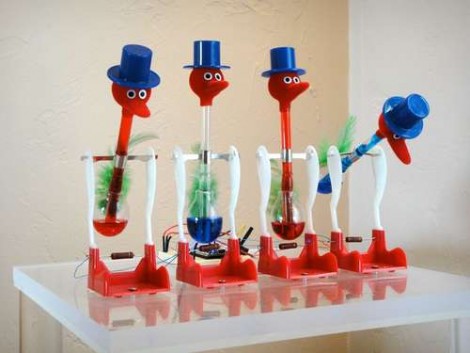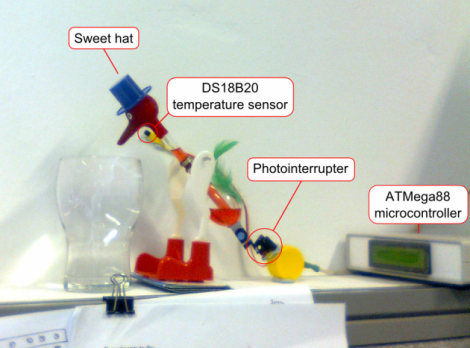
This Dippy Bird clock display is simple to build and it’s just waiting to be scaled up for use as a full clock. As shown there are only enough birds in this rendition to read out the hours. More tiers can be added for minutes and you could even add your own temperature readout function using a separate bird as the thermometer.
Other than the fact that there are only four bits of resolution, the first thing you should notice is that these birds have nothing to drink. They’re intended to dip their beaks into a glass of water, leading to evaporation that changes the temperature of the dichloromethane inside to start their teeter-tottering. Water isn’t used because the birds would be in constant motion. Instead a resistor has been placed in the base of each, which heats up when current is passed through it. A bird in motion is a digital 1, and bird at rest is a digital 0. A set of transistors protects the microcontroller from sourcing too much current. In this case an mbed is keeping time but any microcontroller will do. We’ve embedded a quick clip of the dippy bird clock after the break.











